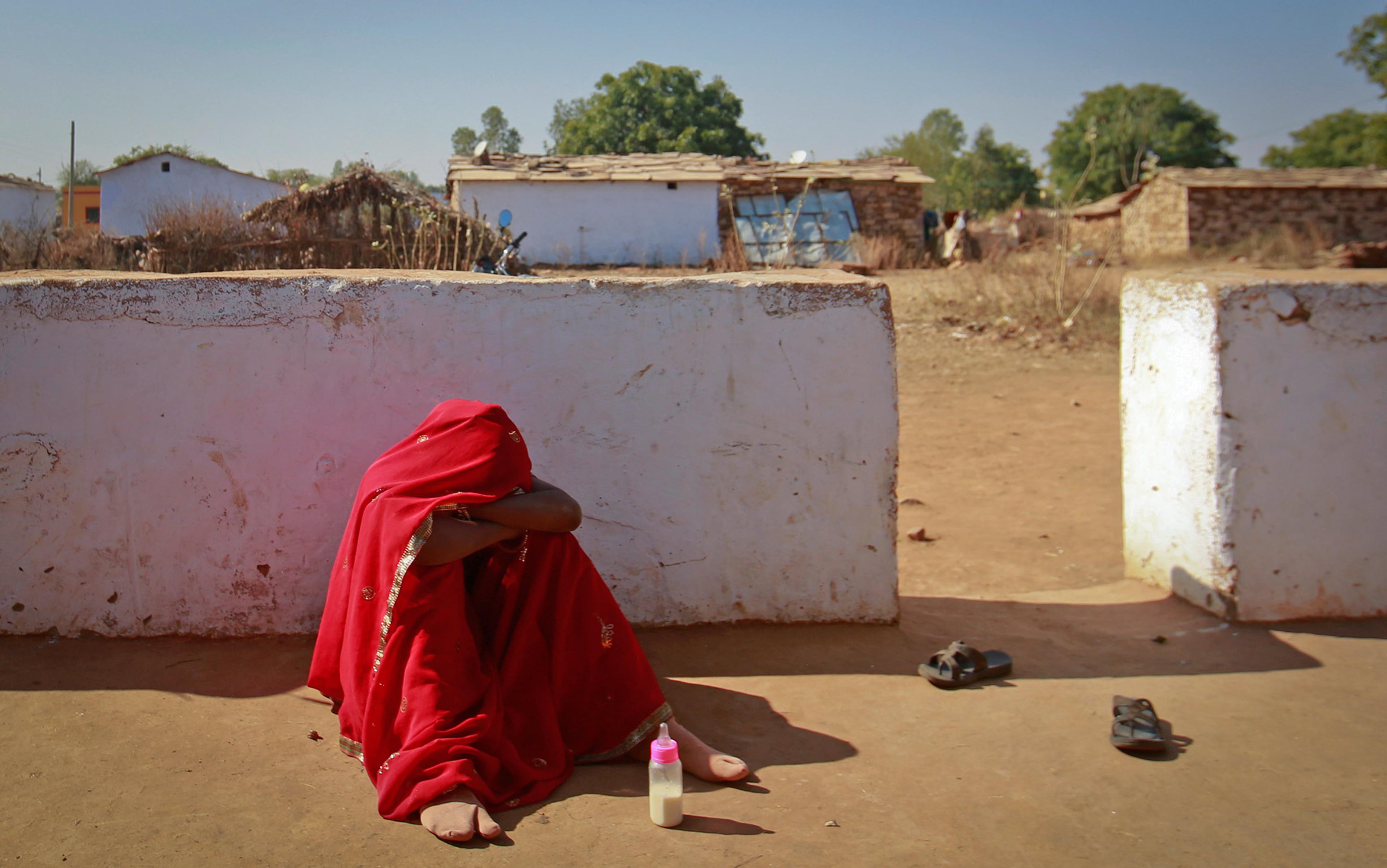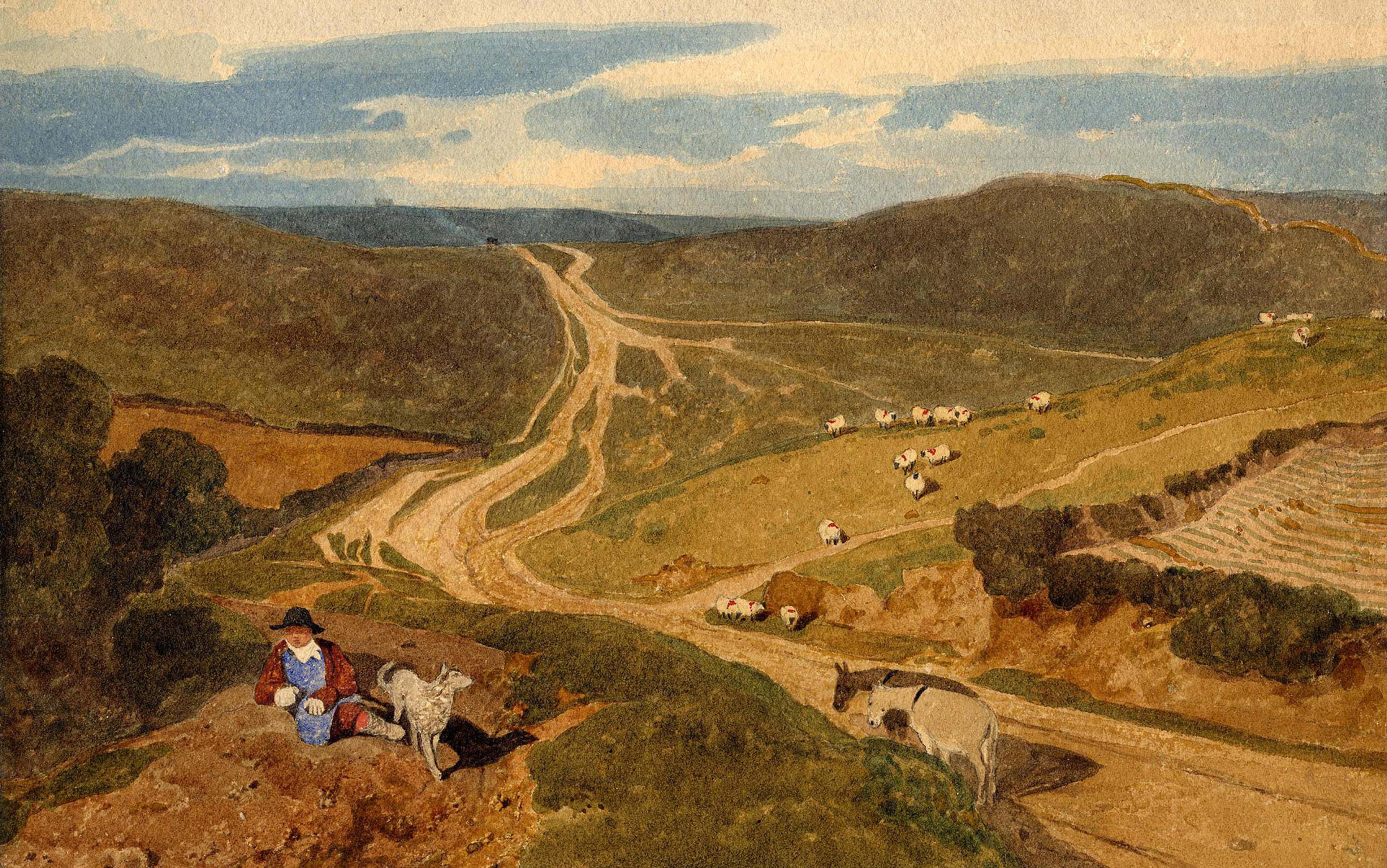Women’s bodies are one of the biggest political battlegrounds of our time. What should in many ways be personal – a woman’s body – is instead political. The assault ranges from the recent clampdown on family planning in the United States (and its global gag rule prohibiting funding for international family-planning organisations that discuss or offer abortion), to new repressive restrictions on clothing, including ‘burqa bans’, or new laws in a growing number of European countries that aim to abolish women’s ability to monetise their bodies. Everyone, it seems, has a view on what women should or shouldn’t be doing with their own bodies.
That is a point I make when protesting naked. When I’m met with criticism and verbal abuse, my response is simple: if you don’t like women’s bodies featuring in the public sphere, then I’m not the one you need to get angry with. If women’s bodies weren’t political, I wouldn’t be spending my time giving naked talks to draw attention to the bleak reality. Blame politicians. Even better, blame the voters who vote for them.
The redoubled attack on women’s bodily autonomy comes, paradoxically, at a time when feminism is increasingly popular. In part, the expanding appeal of feminism might be a response to the evident regression. But feminists are not entirely blameless. A vein of feminism lies at the heart of some of the growing restrictions on women’s bodily freedom. Some ‘feminists’, for example, like to argue that one cannot be feminist while showing off too much of your body; others argue that you cannot be feminist while covering too much of your body. Both see clothing restrictions as empowering to women. Women’s ability to choose seems not to feature; the claim that we are all ‘socially conditioned’ apparently makes it irrelevant.
The greatest of the ‘feminist’ attacks on women’s freedom comes in the form of the ‘Nordic Model’ feminists. They have, in effect, made it harder and more dangerous for women who choose to make money from their bodies. While monetising your brain is to be celebrated, monetising your body is, apparently, to be denigrated, even criminalised – if not on the selling side, then on the buying side. While we can all agree that those forced into sex work should be helped to exit – and those doing the forcing brought to justice – many others are simultaneously being denied the right to make their own choices about whether or not to charge for access to their vagina (by women who are, of course, free to charge for the use of their brains). The intellectual elitism and hypocrisy are apparent, and society’s discomfort with sex – never mind sex work – allows those leading the attack to claim the moral high ground.
This attack on women’s bodily freedoms is deeply worrying – particularly when women themselves are participating as opposed to resisting. Women’s freedom is central to making our societies more prosperous, more equal and more environmentally sustainable. Any attempt to undermine that freedom, no matter how well-intentioned, will make for a poorer and more unequal world.
Of course, women’s bodies are not a traditional subject when thinking about either economic prosperity or inequality. Early birth-control campaigners, however, knew very well that they should be. A world in which women lack control over their own bodies is a world in which women are condemned to a life of reproductive and caring labour, with an expanding number of dependants – and a simultaneous diminution of their capacity to earn and feed them. No woman can be in control of her life, her labour and her finances without also being in control of her fertility.
Still, today, almost one in two pregnancies globally are not intended, and more than 200 million women worldwide who would like to control their fertility have no access to birth-control technology. The global gag rule – a step by the ascendant Right-wing to defund birth control for the world’s poorest women – will increase unplanned pregnancies and make birth-control technology harder to access for some of the world’s poorest women. In the US, the assault on family planning includes headline-grabbing changes to abortion law in certain states, renewed offensives on Planned Parenthood, an organisation that provides birth control and sexual health services for millions of the poorest women in the US, as well as a movement by companies (and, for example, the University of Notre Dame in Indiana) to remove family-planning services from the health insurance that employers provide for people in the US.
Despite the clear relationship between women’s bodies and economic prosperity and inequality, modern-day economists rarely consider it. That’s because economics operates on the basis of assumptions that render us genderless. According to its ascendant orthodoxy, we are all rational, calculating, independent agents. Love, sex, dependency and society fall outside the economists’ way of looking at the world. Furthermore, economists typically presume that we are all free to make our own choices. Potential restrictions on those freedoms (from access to birth control to the criminalisation of sex work and even types of clothing) are ignored. Economics instead focuses on what we do with our freedoms: the choices we make with them, why, and how those choices affect the behaviour of the economy.
If it opened its eyes, economics would be a natural ally to women’s freedom. It could provide a bulwark against the intrusions into the most intimate aspects of our lives, even those undertaken in the name of feminism. The whole idea of ‘the invisible hand’ was that the economy could arrive at the best outcome only if people are free to make their own choices. When the state and the Church regulated so many aspects of life, including what colours different social classes could wear and which days of the week we were able to have sex (all supposedly for our own good or for the good of wider society), Adam Smith’s idea couldn’t have been more radical. Just as in those bad old days when we were bossed around by state and Church, today individual women are being told that someone else knows what’s good for them – often other women.
For Malthus, sex was central to understanding why the rising economic tide would not lift all boats
If economics is to act as a defender of women’s freedom, it needs to remove its blinkers: to bring women and their bodies into the heart of thinking about prosperity and inequality. Gender is almost completely missing from Thomas Piketty’s much-praised book Capital in the 21st Century (2013), and it’s also missing (as, by the way, are women contributors) from recent books that claim to offer new solutions to the present growth slowdown, and a new way forward for macroeconomics.
Unlike present-day economists, the English scholar Thomas Malthus (1766-1834) placed sex at the heart of his story of poverty and prosperity. For Malthus, sex was central to understanding why the rising economic tide would not lift all boats; why the standard of living of the majority would ultimately stagnate. Despite being a deeply religious man, Malthus lacked faith in any attempt to improve the lives of the masses, whether through revolutionary means that re-sliced the economic pie – of a kind taking place in France during his lifetime, and about which other intellectuals of the time were feeling pretty optimistic – or through unleashing economic growth of a kind that grows the economic pie, enabling a bigger slice for everyone.
For a long time, Malthus’s ‘dismal’ view has been relegated to the waste bin of economic thought. Economists have shaken off their pessimistic reputation to become some of the most optimistic of people. Few have greater faith in the notion that human ingenuity will eventually solve all our problems. While some economists certainly do utter the word ‘stagnation’, others are quick to jump to the economy’s defence, noting that past pessimism has always been proven wrong: that across our long history, we’ve become richer despite the fact that population expands year-on-year.
We should not be so quick to write off Malthus. Sex is still central to understanding why so many countries remain mired in poverty today – and why inequality in the West has been increasing since the late-1970s. But, to see why, we need to take a trip back to pre-industrial Europe, to a time much closer to that of Malthus than is our own.
While most of us alive today were raised with the view that, economically at least, ‘West is best’, for millennia Europe was a backwater of global civilisation. While Europeans were chasing wild animals, draped in the skins of those same hunting endeavours, further east, in China, the Indus Valley and the Middle East, great civilisations flourished. How Europe, the dark horse, managed not only to catch up but overtake is one of the most debated questions in economic history. The typical set of answers implicitly revolve around men’s lives, bringing to mind figures such as Isambard Kingdom Brunel, Isaac Newton, James Watt and Richard Arkwright.
What made Britain so inventive that it became the hub of the Industrial Revolution? The question has occupied many a mind. The Enlightenment, a high-wage economy and a bourgeois ethic are all popular explanations. However, when looking for what might have made Britain – and indeed wider Europe – different to most other parts of the world, giving it the special ingredient that enabled it to move from the bottom to the top of the international league table, we should look at women’s lives. When it comes to explaining the rise of the West, women’s freedom is the elephant in the room.
On the eve of the Industrial Revolution, women in Britain and nearby parts of Europe lived a life that was markedly different to those elsewhere in the world. Though not in the upper echelons of the payscale, it was common for women to engage in paid work, and they were free to decide for themselves whether, whom and when to marry. As a result, some women chose not to marry at all, and the average age at which those who did marry rose to a remarkably modern 25-26 years in the centuries prior to the Industrial Revolution.
Large parts of the world are still locked in a vicious circle, where wages are low and labour is abundant and cheap
Furthermore, because newly married couples set up independent homes, rather than a newly married woman being absorbed into the groom’s family, marriage responded to the motions of the economy. If fortunes took a turn for the worse, people postponed marriage and, with it, baby-making. They had to – until they could afford otherwise. This affected population dynamics in a way that helped to keep population growth in check, enabling the economy to support a higher wage. The relatively greater degree of women’s freedom in Europe meant that the economy entered its virtuous circle in which higher wages and productivity growth positively fed back on each other.
As globalisation continued, the West lost its relative insulation from the rest of the world. The virtuous equilibrium that gave rise to the Industrial Revolution and the continued expansion since has collided with an altogether different kind of equilibrium. Large parts of the world are still locked in the opposite of a virtuous circle: a vicious one, one in which wages are low and, as labour is abundant and cheap, there is little incentive to invest and invent. This dynamic is a consequence of women having little control over their own lives, even their fertility. With little in the way of financial independence, girls lack the means to stand up to their parents and avoid or delay marriage. Once married, young women (or, rather, girls) then lack the ability or freedom to take charge of their baby-making capacity.
One of the great achievements of 20th-century humanity came in global public health, in the efforts to eradicate or radically diminish diseases. The success in lowering the death rate, without a similar-sized decline in fertility, meant that the global population ballooned. In 1920, global population growth was no more than 0.6 per cent a year, no higher than it had been in 1760. By 1962, it had reached 2.1 per cent. While global population growth has since slowed, to around 1.2 per cent, all of those babies born in the peak have, up to the present day, contributed to an expanding global labour supply, and population is still growing twice as fast as it was historically. While in 1962 the global population was not much more than 3 billion, today it is more than 7 billion. By 2100, it is projected to rise to over 11 billion. One of the major developments in world economic history over the past 35 years has, therefore, been a significant expansion in effective labour supply. The increasing integration of the world economy means that the growth in labour supply is felt everywhere.
Through globalisation, whether through immigration or trade, the expanding global labour supply has become available to more and more Western businesses. With it, bargaining power has suffered in the West, putting an end – at least for now – to the high-wage growth and high-productivity growth equilibrium. The result is widening inequality in the West. Businesses have been able to substitute capital with the cheaper labour pool, resulting in lower investment rates and slower productivity growth. The economic pie is expanding at a slower rate, and becoming more unequally distributed.
To bolster the standard of living, individual Western governments have turned to minimum or ‘living’ wages. But they do not have the power – individually – to tackle what is really a global problem: a world awash with people. Some, buoyed by voters, are therefore responding by restricting immigration or raising trade barriers. We should instead resolve the problem at the source. A crisis brought on by too little freedom should never be resolved by further restricting freedom, in this case freedom to buy and sell across borders or freedom to move in search of a better life.
If women have control over their bodies, they will make fertility choices to help keep the wolf from their door. They will lead lives that help to prevent population growth from undermining wage growth. Economic empowerment is prerequisite for a woman to have such control over her body. Opportunities to become educated, to join the workforce and to be represented in political decisions (including about birth control) are all necessary. Rather than being a pawn, to be ‘married off’ at a young age and produce child after child, women with the opportunity to support themselves financially are able to take control of their lives. They have the freedom that allows them to go out into the world and build an independent life, determining for themselves whether, whom and when to marry. Women’s wombs become their own. Simply by being able to act in their own self-interest, women will, without knowing it, make choices that not only help themselves but that add up to a more prosperous and equitable global economy. And one that’s better for the planet.
Falling fertility freed women, increasing their economic independence and challenging their subordination
According to UNICEF, the proportion of women today aged 20-24 who were first married by the age of 18 stands at 41 per cent in West and Central Africa, 35 per cent in Eastern and Southern Africa, and 30 per cent in South Asia. Asia is home to almost half of all child brides; and one-third of them are in India. Globally, one in five girls marry before they are 18. The United Nations Family Planning Agency has documented that, once married (and, indeed, before), many of the world’s poorest women lack access to reliable birth control. Right now, for too many, the problem is getting worse not better.
China is the great exception. In 1980, China was home to more poor people than anywhere else in the world. However, since 1981, 680 million people have been lifted out of poverty. The proportion of those living in extreme poverty has fallen from 84 per cent to less than 10 per cent. This is the single most important development in lowering global poverty and global income inequality. According to standard accounts, globalisation and market liberalisation are responsible. However, women’s relatively low fertility must play a role, and stands in stark contrast to other poor countries.
By taking steps to restrain population through its ‘one child policy’, the Chinese state helped to overcome a population problem that blighted the standard of living throughout history. Along the way, falling fertility freed women to work outside the home, increasing their economic independence and challenging their subordination. To be sure, the ‘one child policy’ has come at a big price – in terms of restricting choice and ‘missing women’. State attempts to directly suppress population growth have a murky history, including forced sterilisations of some of the world’s most marginalised and poorest women. Such practices are abhorrent and the antithesis of freedom. European history provides a much better path, one in which greater opportunities for women to participate in the economy transform family life and allow women to voluntarily take control of their own bodies.
Some economists have expressed deep concern about the way in which a slowdown in population growth might harm the economy. Newspaper headlines deliver messages such as ‘the choice to be childless is bad for America’. This consternation ignores the fact that population growth has too often depended on women’s unfreedom. Population growth has in fact been built on women’s hard, unpaid labour. Women’s reproductive and domestic labour have, of course, historically been excluded from the cash economy.
In the longer view, equitable and environmentally sustainable growth is possible only if we give women freedom to take charge of their own fertility. While fertility rates have been falling in recent years, we still have a long way to go until women’s bodily autonomy becomes a reality for all women. At present, sadly, we risk moving backwards.
Inequality is one of the most pressing crises of our time, and we’re tackling it in precisely the wrong way. Rather than restricting the freedom of individuals, we should be increasing it, especially women’s freedom to control and make decisions about their own bodies. Respecting women’s autonomy and personhood will not only help the world’s women, it will create a more equal form of prosperity, one that’s better for the planet. If economics comes to embrace the sex factor, it could lead the way – rather than lag behind – in fighting for women’s freedom and a better world.
‘The Sex Factor: How Women Made The West Rich’ by Victoria Bateman is published via Polity Books.






